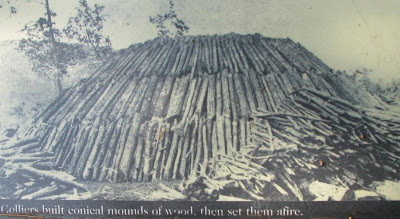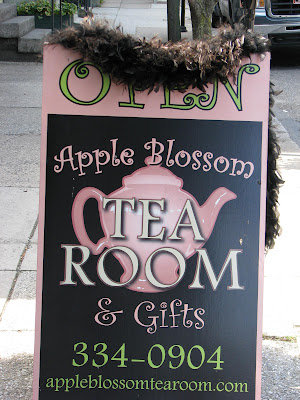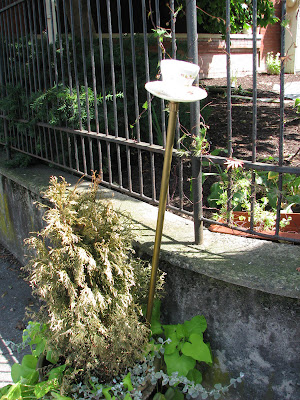I am drawn to this period of America’s history --- the years leading up to the War of Independence, so when I saw that there was a French and Indian War Reenactment being held at nearby Old Bedford Village this past weekend, I was excited to go. This area is particularly suited to this era as it is located along the old east/west Indian path that is now known as Route 30. In addition, Forbes Road, named for the British General, is also here. Old Bedford Village itself is a reconstructed village comprised of log cabins that have been relocated to the site; there are also shops which would have been found in a progressive town. Since OBV also has Civil War reenactments, these buildings serve to span to include that time period too.
Upon entering the village, we crossed a covered bridge (see former posting on covered bridges), and immediately saw some tents pitched near the stream. This area portrayed the colonial Ranger’s encampment; the British were bivouacked in the town, with officers occupying the buildings, the regulars in camps. At these reenactments, each side takes a turn at “winning”, for as the one gentleman said, “they drive as far as everyone else”, and so today the French and Indians were the victors. Thus the French had control of the fort.
These are pictures of the buildings and interiors giving you an idea of the accommodations.








Some of the buildings used for business had displays: the apothecary,



candle maker,


tinsmith,

rifle maker,

milliner,

weaver,



broom maker




The most interesting to me was the basket maker, who was also the wig maker. The style for men of the 1700’s (and prior) was to wear wigs. The material for these wigs could be horse hair, probably from the mane as that was softer than tail hair. Although a horse hair wig was comparable to modern day cheap synthetics, a cheap wig. Other wigs contained real human hair, obtained by either the wigmaker purchasing hair from someone who cared to sell theirs, or bought from undertakers who “fleeced” their customers. After all, that person no longer had use of it!

The hair was then separated into a couple of strands, woven through some linen strings in a secure fashion, making a line of hair. This line was then sewn onto a webbing material, line by line, until it was covered, producing a wig. The wig was then dunked into sugar water, curlers were put in while still wet, and when they were removed the curls remained stiff from the dried sugar water. Should the wearer get caught in a rain storm, the process was repeated.


Here are some pictures of the villagers going about their business



The British soldiers passing the time




The Scottish contingent doing chores



Or their officers resting

But word was afoot that there was an enemy patrol in the area, be on your guard


Troops began to muster




General Forbes himself

Sure enough! Some Frenchies in the bush!



Guns are primed, shots are fired and a skirmish ensues





But the French are outnumbered and the colonists put them on the run



The British meanwhile, line up in their toy soldier fashion to do battle, unlike the Indian-way in which the colonists fight



The French taunt the British

And the battle begins with the French in control of the fort





The French can even blow smoke rings with their cannons --- that’s the French, always doing things stylishly!


The colonials charge ahead, to disastrous results



Many of the British fall



And make one last volley before retreating



The French run them off the field and finish off the fallen soldiers. We won’t show the scalpings that occurred, along with the blood curdling screams of the Indians.



The French get to lead the parade since they were the victors this time.
































































































































